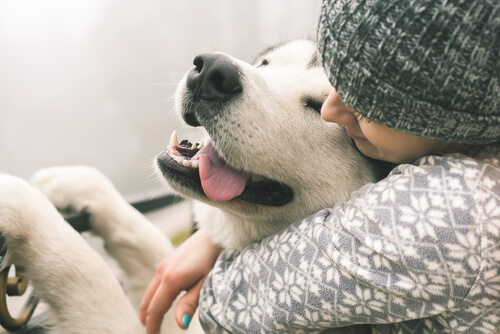Science Shows that Dogs Have Feelings

The conscience of animals
Both the scientific community and the legal world have been reluctant to accept that animals are beings that feel and suffer like people do. Given that they didn’t know much about animals’ minds, they chose to ignore a world richer and more complex than they thought.
However, this decision does not match the perception that animal lovers have. Associations in favor of animal rights, as well as political parties, believe firmly in the emotional intelligence of animals.

In December 2017 in Spain, the Congress of Deputies declared that they be considered as “beings” subject to rights and not as personal property. Little by little, we are making progress on changing our perception of animals and their form of thinking; one of the most recent discoveries concerns dogs.
A brain scan, the key to discovery
The idea that other animals can have feelings wasn’t considered until ten years ago. The neuroscientist Gregory Berns, of Emory University, decided to focus his efforts on finding out if dogs can feel emotions. His idea was to train a series of dogs to subject them to a brain scan.
Thanks to that test, Berns was able to map the brain of the animals and see how they responded to different stimuli that he presented. The results appeared in his book What It’s Like to Be a Dog.
A published study in the magazine Science had already confirmed that dogs could process information in a similar way to humans. In this essay they proved that the left hemisphere reacted to words, while the right reacted to the intonation with which the words were pronounced.
The story of Callie, the first subject of study
Berns adopted Callie, a mixed female Terrier, from a local shelter. He did not choose her for any reason in particular; Callie was curious, and like many other terriers, full of energy.
First, Berns decided to build a simulator in his house to get the animal used to the typical noises that hospital scanners make. To do this, he recorded the sounds from the machines’ magnets and reproduced them at home while playing with Callie.
Initially, Berns reproduced the sounds from the machine at a very low volume, and then increased it progressively. The process lasted between two and three months, and was easier than expected. With this first success, he opened the doors for new subjects to join the project.
A similar caudate nucleus in dogs and humans
The caudate nucleus is a structure located in the deepest part of the cerebral hemispheres. It is a common element in all species, especially in mammals, and essential in the reception of dopamine.

The caudate nucleus is active at the moment in which the subject reaches the so-called “state of anticipation.” Once he receives the information, a decision-making process will take place, which will determine what to do with it. If it is something positive, this state is more intense.
This brain structure is activated analogously in both dogs and humans, and under the same conditions. However, the clear differences in size (a dog’s brain is the size of a lemon) makes them not have the same capabilities as us.
So, can dogs love us then?
In the experiment, they showed two objects to the dogs. They had trained them to identify one of the objects with food and the other with their owner saying “Good boy!” Some dogs preferred the first; others, the second.
There is not a categorical response in this regard. The reactions were equal. The type of relationship that they have developed with their owner makes the difference.
Source of the main image: smlp.co.uk
This text is provided for informational purposes only and does not replace consultation with a professional. If in doubt, consult your specialist.